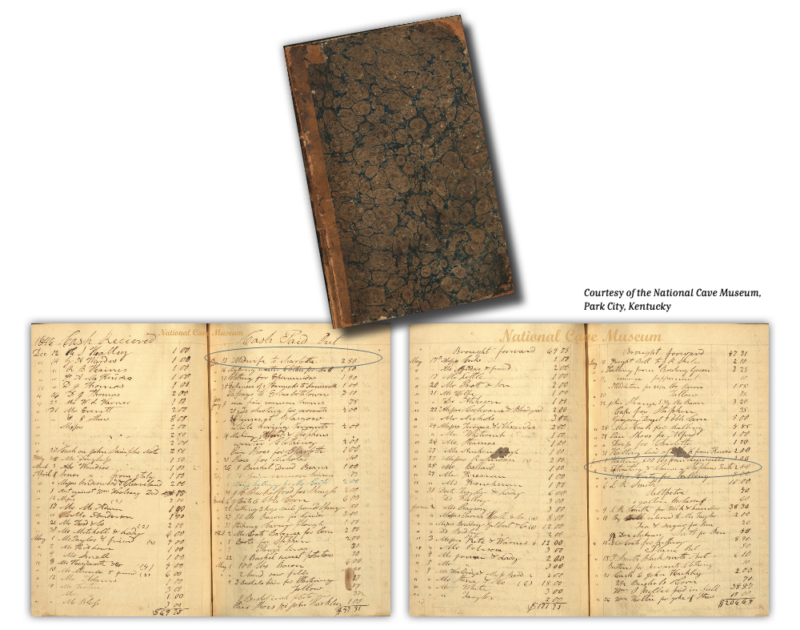Teasing Out Black History presented by Dr. Joy Carew
Listen to “Teasing Out Black History” presented by Dr. Joy Carew at Locust Grove in March 2019.
Read MoreIn November 2021, an online auction was held by Hindman Auction House. I sat eagerly at my desk, coffee in hand, in the fervent hope of winning the latest treasure that had been discovered relating to Mammoth Cave and, tangentially, Locust Grove. The treasure — a Mammoth Cave Account Book kept by Dr. John Croghan from May 1846 – June 1848, not long before John’s death.
Unfortunately, Locust Grove was not the only bidder on this incredible find. We were wildly outbid, but fate intervened. That same week, Locust Grove board member Del Marie Vaccaro told me that she knew the winning bidder for the ledger! It was the National Cave Museum (NCM) — a small, privately owned museum that sits in a concrete building just inside Mammoth Cave National Park.
So, earlier this year, I made connections with NCM board members Stanley Sides and Gordon Smith — and went on a research trip to the cave area. With the help of Assistant Curator Laine Roberts, the discoveries I made were both fascinating and exhilarating.
It is no secret that Locust Grove and Mammoth Cave have a noteworthy connection. Dr. John Croghan purchased Mammoth Cave in 1839 for $10,000 and retained possession until his death in January of 1849. In this transaction, John Croghan also purchased enslaved cave guide Stephen Bishop and “leased” cave guides Materson and Nick Bransford.
It is important to emphasize that being leased out was still an oppressive and traumatic act of enslavement. Their lives and bodies were “rented out” for $100 a year from their enslaver, Thomas Bransford.
By far, the most famous of Dr. John Croghan’s enslaved cave guides was Stephen Bishop. Without the brilliance of Stephen Bishop and his creation of the first map of the cave, it is unclear how much of the cave we might know of today. He was just 18 years old when purchased by John Croghan, and he spent his entire adulthood traversing the caverns, enchanting cave guests, and entering the dark unknown on his own exploration expeditions.
The ledger held information on the purchasing of materials for the first Mammoth Cave Hotel — John’s expansion project on the few small cabins at the foot of the cave that functioned as the only shelters on the property until the late 1830s.

My favorite discoveries in the ledger were the details of medical treatment for the enslaved community at the cave. It’s important to note that this was not wholly altruistic, but rather Dr. Croghan protecting his investment in his “property.” The very fact that we only find this information in a property account book listing expenses is telling.
In these pages, we discover that Charlotte, Stephen’s wife, received midwifery care. We also discover an entry dated June 2, 1847, for “extracting & cleaning Stephen’s Teeth” with the fee of $2.00 next to it.
The relationships now built between Locust Grove and the National Cave Museum prove vital in learning more about the early history of the cave and, most importantly, the community of men, women, and children that helped build and sustain it.